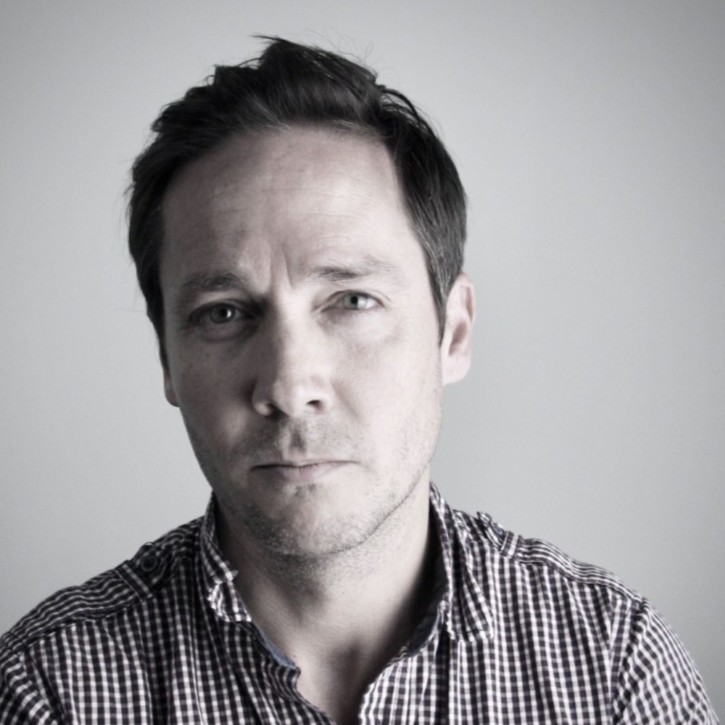After a stronger than expected recovery from the economic shock of the pandemic, businesses are once again focused on growth, but while sentiment remains positive there are some daunting headwinds.
As Senior Vice President of SAS – the world’s largest privately-owned software company – Roderick Crawford is tuned into both the concerns and the growth ambitions of clients in a time of high inflation, fractured supply chains and unpredictable geopolitics. We spoke to him about how a combination of transformative IT and culture can help businesses deliver on their growth ambitions. It’s about a 6 minute read.
We seem to be witnessing a significant change in business mindset at the moment. Across 2020 and most of 2021 many businesses were in survival mode, but now the focus has switched to growth. Is this something you see reflected in your own organisation?
Most definitely. First and foremost, what we’re seeing at the moment is a lot of optimism and increasing confidence on the part of our clients. For us, that’s hugely important. We are a business-to-business organisation, and our own fortunes are to a very great extent directly linked to what our clients are experiencing and how they feel about their own prospects. As the concerns about Covid receded and restrictions were lifted, business sentiment as a whole responded positively and that has undoubtedly been good for us.
Is that improvement in business sentiment likely to continue, given the events of the last few months?
Things have certainly changed. Supply chains remain a problem. The Covid epidemic has been brought under control in Britain and the West in general, but it is still causing huge disruption in China. Supply chains that were already to some extent broken are now under further pressure and that hasn’t been helped by geopolitical events.
Meanwhile, central banks are tightening monetary policy, meaning more expensive borrowing. So yes, the talk now is of economic headwinds. That doesn’t mean the optimism has evaporated but it is tempered by what’s going on in the world.
So, what does that mean for your business? How do you maintain forward momentum while also taking account of the challenging economic and political backdrop?
We are looking at how we can grow the business, but also how we can protect it as we head into troubling waters both locally and globally.
What do you see as the biggest challenges at the moment?
Inflation is a massive issue for us. We haven’t had inflation at this level for a very long time – since the 1980s, in fact – and there will be many business leaders who have never experienced this kind of economic environment. So, there is a risk that despite all the optimism, demand will drop. Consumers are struggling with the cost of living and have less to spend. Businesses are facing much higher costs, so they’re looking for ways to reduce costs and drive efficiencies.
What does that mean for your organisation?
It’s a double-edged sword. Certainly challenges, but also a real opportunity to help clients become more competitive. In terms of the challenges, we could see capital investment fall. Traditionally, in this kind of scenario, information technology is one of the sectors that doesn’t do so well. People ask themselves: “how do I cut my costs?” And then: “How do I cut my IT costs?”
But forward-thinking companies won’t be doing that. We’re a data analytics company and what we offer to clients is a means to drive efficiency and cut the costs of transactions. In the current climate that’s exactly what great businesses are seeking to do. We’re well-positioned to meet that demand.
What’s the biggest growth opportunity that you have identified, either within your organisation or outside?
The biggest trend – and by extension the biggest opportunity – that we’re seeing is in automation. We are working with a lot of clients on automation and also having a lot of conversations. What we’re seeing now is that our clients are beginning to invest in robot process automation (RPA). Essentially, this involves using software bots to automate processes and it’s a sector that we think is set to grow very quickly.
Why do you think this particular area is proving so attractive to your clients?
Well, the most interesting characteristic of RPA is that the software is very good at handling the most repeated and monotonous tasks within organisations. This is in itself a benefit as it frees up personnel to do other things. But one of the real opportunities here is to deploy RPA solutions to handle much more complex processes that are typically completed across multiple parts of the organisation. Any organisation that can drive what you can describe as hyper-automation into complex functions has a chance to gain a significant competitive edge over rivals.
Productivity is a clear way of mapping a business’s growth potential, but culture plays an important part too. What’s your take on the role of culture in promoting growth within an organisation?
I think it’s clear that culture is an important factor in driving growth, but it’s important to pin down what that looks like in practice. In my view, the organisations that perform better over the next three years or so will be those with a culture that can be defined in terms of a growth mindset. That mindset must be shared by everyone within the organisation and in a way that is highly collegiate. Common goals and shared values are essential.
Why do you think that a culture of shared goals and values is important?
It feeds into a working environment in which team members feel that they are not just employees but real stakeholders within the organisation. Culture has always been important within organisations. They are called organisations for a reason – because they are an organisation of people. The ability to get people to work more effectively and more agilely together actually plays a part in simplifying the organisation. If you have a complex organisational structure, and then you have a culture that is heavily siloed where people think incredibly differently, you’re just going to exacerbate that complexity. In contrast, If you have a complex organisational structure, but you have a strong level of understanding and shared thought across that organisation about how to achieve outcomes collectively, then even in a complex organisation they can be amazingly successful.
What are the consequences of not having that kind of culture in place?
If you don’t have a strong culture that people want to be a part of, you will be a victim of the great resignation. Why? Because people will leave in their droves because they can and want to.
Are there key tools or technologies that can help leaders be more flexible or prepared to facilitate this growth opportunity?
There are so many things. For me, it’s a lot about simplifying processes and automating them? It’s also about getting the best out of people. How do you get people to act with a sense of speed and urgency but in a coordinated way? I think when it comes to people, there are methodologies on how to behave and think in an agile way. If organisations are going to be successful, and seize the growth opportunity, they need to invest heavily in enabling people to embrace agile working. I don’t think businesses invest anywhere near enough in that particular area. This is a work in progress. CEOs and leaders of organisations need to put a lot of thought into how they are going to train people to think with a ‘growth’ mindset.
Thank you Roderick Crawford.
To stay up-to-date with the latest insights, interviews and reports from the Boardroom Club please register for updates. To become a member and receive invitations to events and to be interviewed, you must be a senior executive at a FTSE350-sized public or private organisation. Membership approval or completed by our Club Director following your registration.








